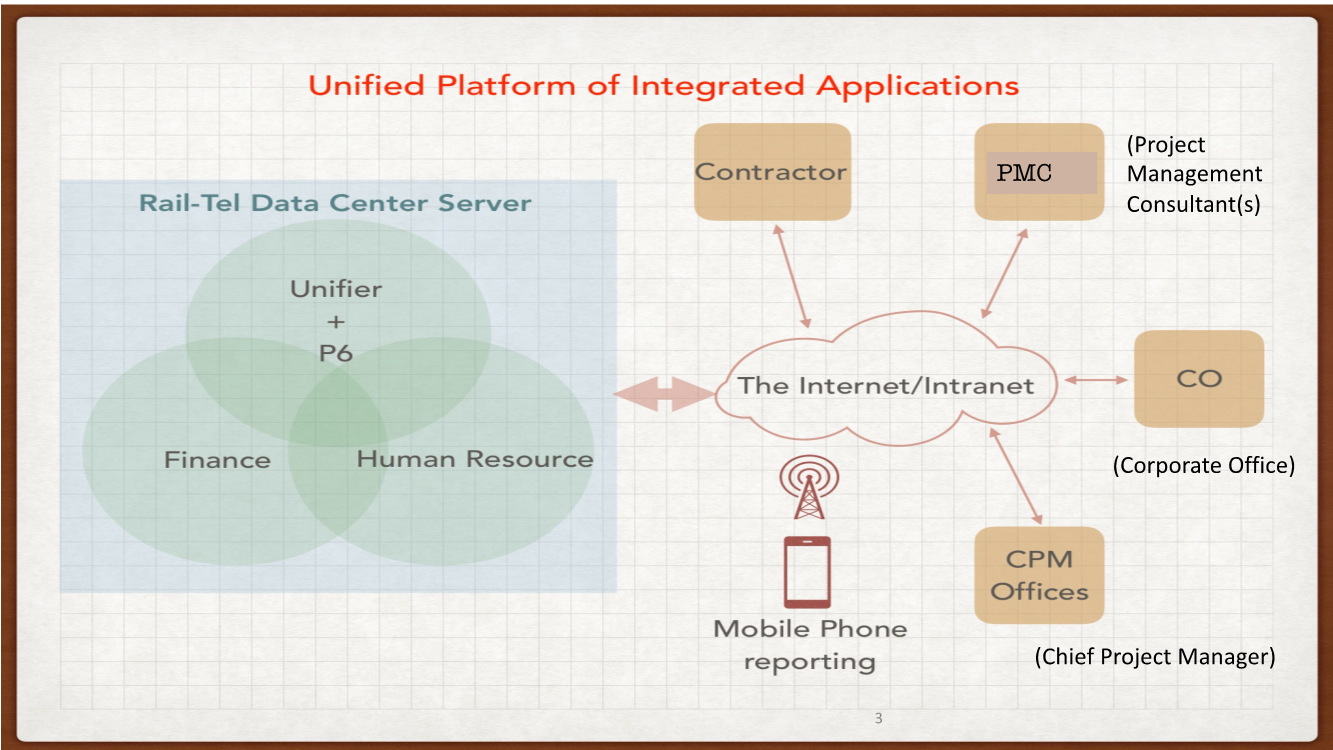Abstract: Public Procurement covering both pre & post Contract operations and management, is essentially based on pillars of Transparency, data accessibility, effective competitive environment, efficiency, accountability and tools for control/project management. Any large infrastructure project involves design and structural complexities covering various streams like civil, track, roads, bridges, electrical, signalling, rolling stock etc. having multiple stakeholders along with inherent interdependencies of activities. Standardisation of process and on-boarding of various stakeholders by introducing Information Technology (IT) based tools like Web-based single source of information platform which can work in a paperless manner to a large extent, is essential for efficient execution and real time monitoring of project. Much of the stated objective has been met through the use of available state of the art Activity Scheduling platform integrated with Document and various Business Processes (BP) configuration and management tool. The platform is extensive, inter linkable, flexible, scalable, secure, real-time, integrated and workflow based having the capability of measuring progress in a controlled and systematic manner. Uploading of large number of drawings, documents, RFIs, real time reporting, enforcing a paperless system to the extent feasible, seamless transparent system, approvals & communication between the parties, status of various business processes, physical and financial progress and dashboard for summarised information are key features for choosing and establishing a suitable IT system for seamless project monitoring. Various organisations, involved in large construction projects, use various customised combination of IT tools for monitoring their project.
Mega public transport High Speed Rail Project i.e. Mumbai-Ahmedabad HSR post contract monitoring and management started on the customised workflows covering various areas of actual project data and documentation management with real time communication and faster information retrieval based with PMIS developed on the required IT platform. The objective of implementation of Project Monitoring system is to help in achieving high level of transparency, efficiency, accountability, data accuracy, single source of information. System should have inbuilt features controlling the processes, dashboard reporting for reducing the delays, simplifying the approval process. The system should maintain a single source of real time information for all stakeholders facilitating the execution of work in a transparent manner with reduced manual
interaction to a large extent.
National High Speed Rail Corporation Ltd (NHSRCL) is using web-based Project Management Information System (PMIS), which is on the platform of ‘Unifier’ i.e. Project Management software integrated with activities scheduling software Primavera-P6, Analytics for Dashboards and EBS (ERP) modules for internal processes (Financials, HR, employee expense, Procurement of goods/works) to monitor Mumbai-Ahmedabad High Speed Rail Project (popularly known as Bullet Train Project). The Unifier software has been fully customised from scratch to the present exhaustive modules/Business Processes which includes various contract and execution related processes. To provide access to the PMIS during mobility, Unifier Mobile app has also been integrated with the system. BIM-4D simulation is under integration with P6, for the recently awarded Mumbai BKC Station package.
The combination of different IT tools for monitoring of projects by some of the organisation is tabulated below;
National High Speed Rail Corporation Ltd (NHSRCL) is executing Mumbai-Ahmedabad High Speed Rail Project (popularly known as Bullet Train Project). This project is JICA funded and has been conceived with Japanese Shinkansen technology. The total length of project is 508 km stretching from Sabarmati in Gujarat to BKC in Mumbai.
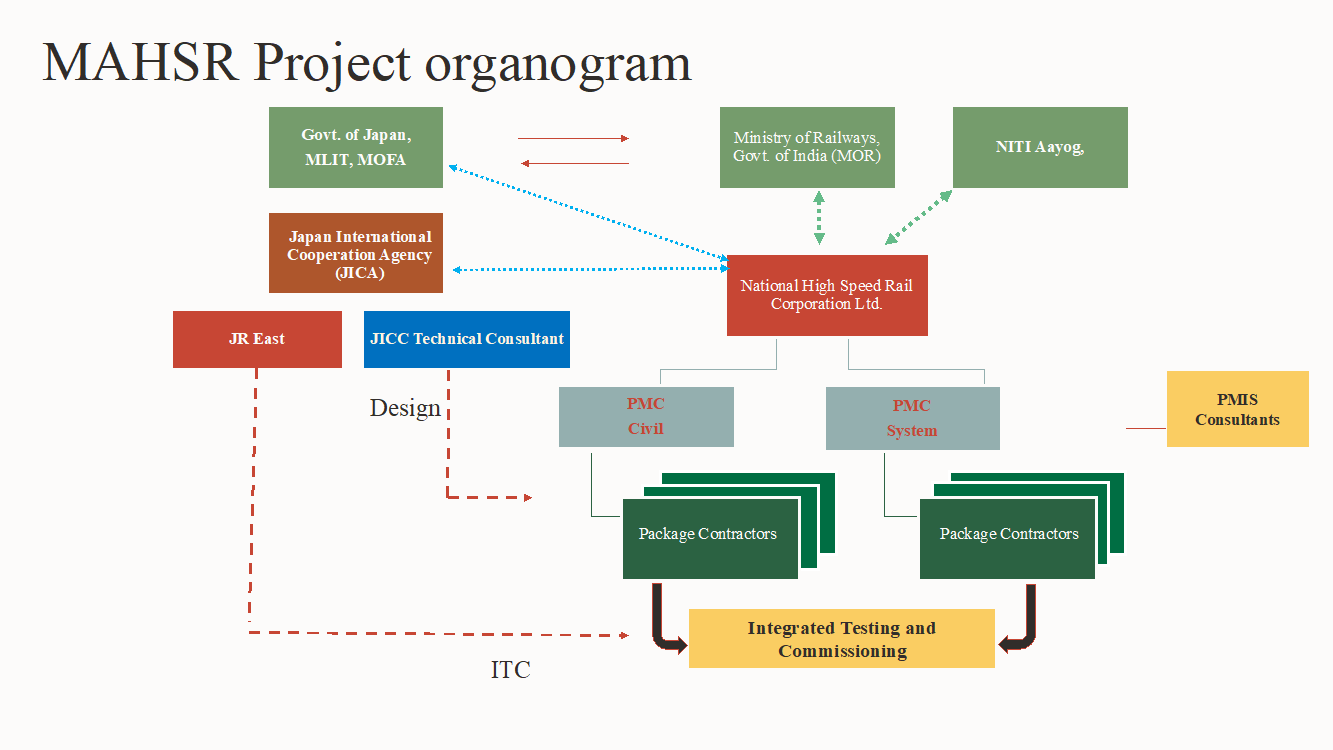
- Complete MAHSR Project has been divided into several packages, which is created and stored in a single, secure repository enabling visibility for all stakeholders. The solutions bind all packages together with a package level role-based access control with an ability to quickly record, access, filter and retrieve the information securely. The information gets rolled up to overall project level according to the requirement.
- The deployed solution includes an auditable business process management which allows Employer to track Contractor/Engineers submissions and holding periodic progress review based on PMIS data.
- The solution includes a robust Document & Drawing management module covering high-level basis-of design documents, detailed specifications, as built drawings, all documentation utilizes controlled permission levels to manage access across the packages. No email or paper approval processes are required other than the system approval.
- The solutions provide facility for contractor submittals and their revisions with automated workflows at the backend. Solution also tracks important documents such as bank guarantees and tracks its expiry.
- The key complex business processes built and implemented are Request for Inspection (RFI), Interim Payment Certificate (IPC), Material/Vendor/Lab approvals, Meeting minutes connected with user delegated Action items, Contract and related process i.e. Variation/EOT/Claims. NCR/CAR (Nonconformity report/Corrective action report), Interface information, handing over process, Dispute Board etc. linked with IPC. Quality reports and safety incident reporting and mitigation are also part of the unified solution.
- The most complex piece of the entire system is P6/Unifier Integrated Progress measurement system, wherein actual cyclic weekly progress is fed by Contractor and approved by Engineer in PMIS. System generates Package and project level physical S-curve based on the above. According to the need of Stakeholders, new processes are being developed and added. A key challenge for setting up the desired standard system was recognised while planning regarding prior experience or know how of such end to end complete information system. Moreover, the proposed system should satisfy large number of stakeholders, industry practices, compliance of contractual conditions. To solve the possible issues and gaps in connecting and developing various processes, it was launched based on Built-Test-Use-Modify i.e., Agile Methodology. To cover the entire gamut of areas and activities, various known strategic software utilities were identified. Such diverse utilities include planning & scheduling, modular business processes designing, E-Business suite (EBS) modules of Contract/SCM (Supply Chain) and Financials. In order to achieve the single unified PMIS, all these areas were integrated as per requirement.
- The Unifier platform is flexible and any type of Business requirement can be quickly designed in a controlled manner with access control and integrations with other processes. For e.g. NHSRCL’s e-office was also designed during Covid period on the same platform without any hardware/software cost. Similarly, future HSR corridors execution or future HSR Operations and real estate management requirements are also planned to be developed using the same platform without additional software.
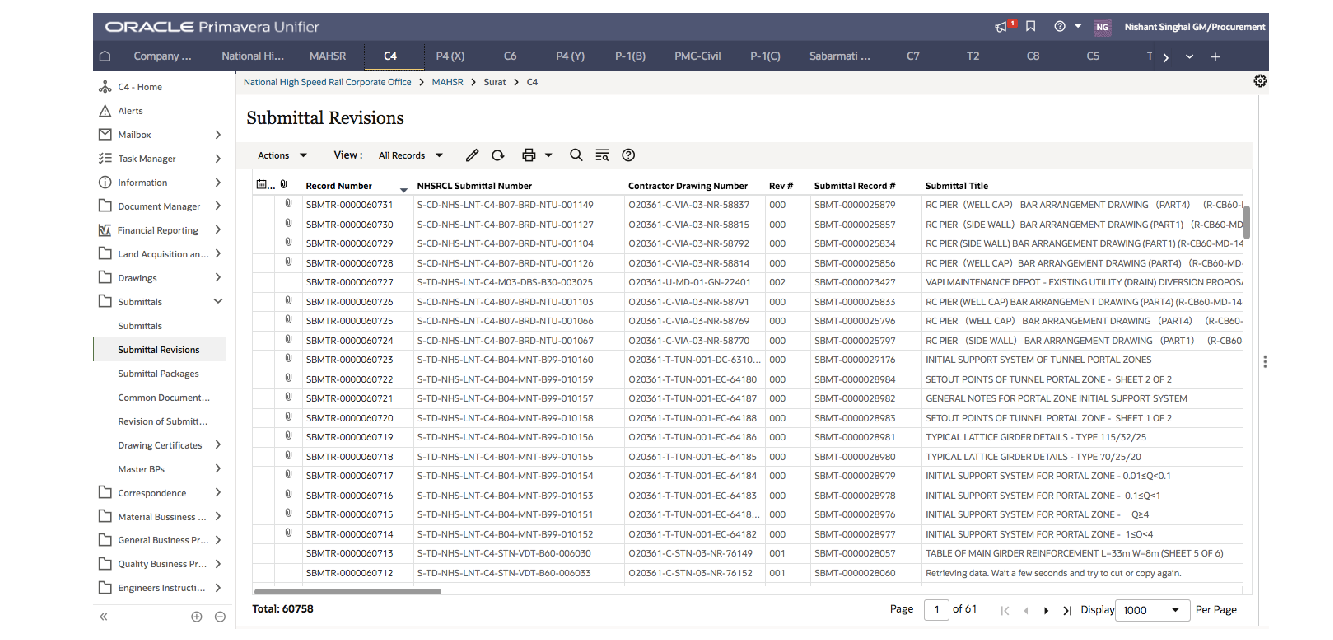
Drawing and Document Submittal BP
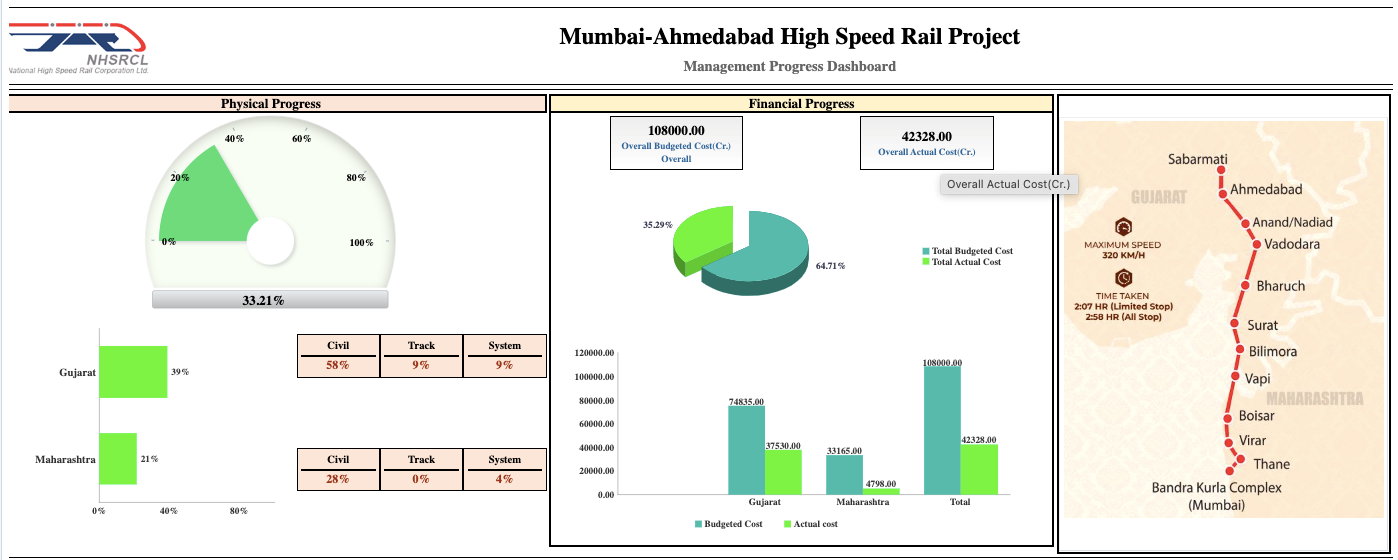
Project Progress Dashboard
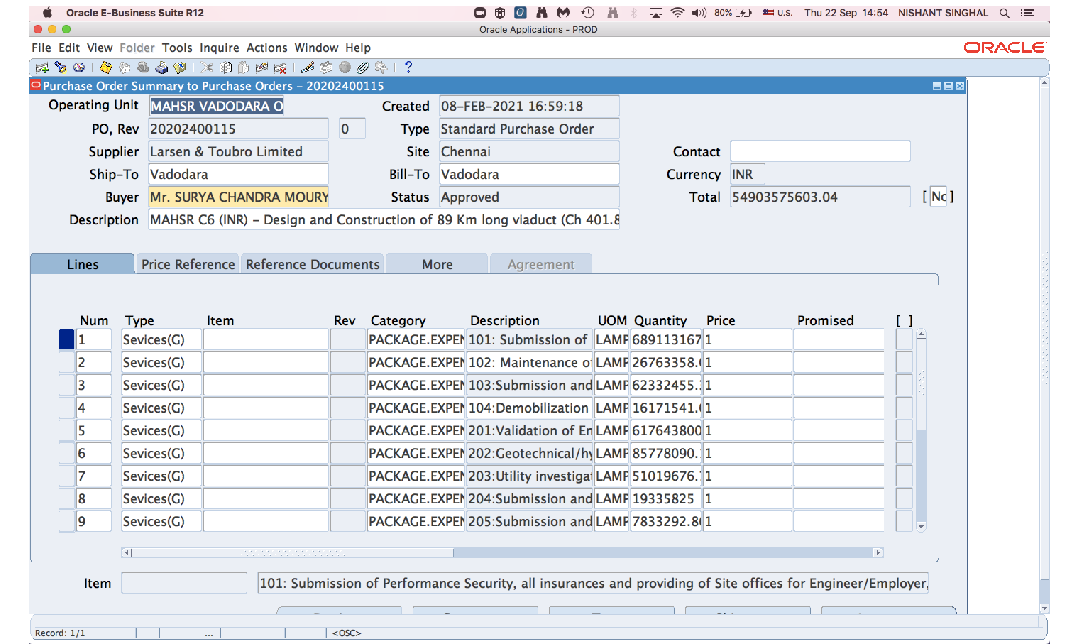
E-Business Suite Contracting Module
Conventional approach of monitoring of public projects lead to time over run, cost overrun, duplicity of information, delayed information, scheduling conflicts, delaying payments to suppliers, late reporting from site which can increase additional costs etc. The web based centralized Project Monitoring System maintains a single source of a real time information shared in a transparent manner with all stakeholders, covering drawings/document/progress/quality/safety/ contract management i.e., cost/schedule monitoring & control. Contractor’s submissions and tracking of approval status has been simplified through the designed process and retrieval facility in PMIS, on few clicks. All-important documents related to quality and quantity, like Request for Inspection (RFI), Checklists, measurement sheets etc are uploaded along with submission of IPC. No physical documents are required to be submitted. System effectively tracks the delay and fixes the accountability. Workflows has been designed according to the need of stakeholders and contract conditions. PMIS is the official channel of communication enforceable without dispute according to the contract conditions.
The Project Monitoring System can be replicated in different organisation dealing with public procurement with customized changes according to the project requirement subject to applicable licensing compliances of the underlying software platform.



